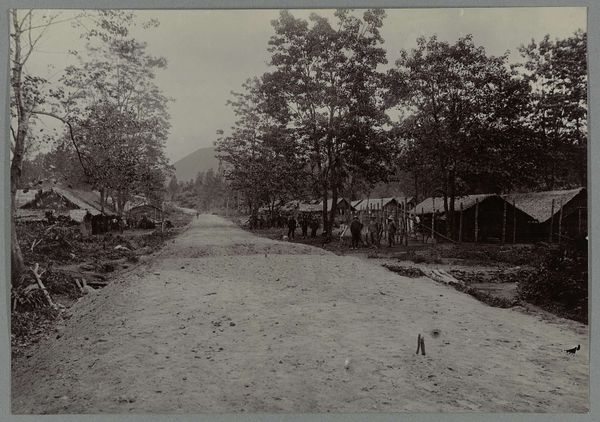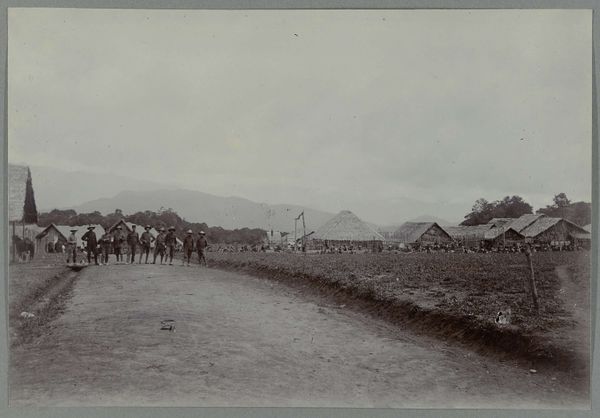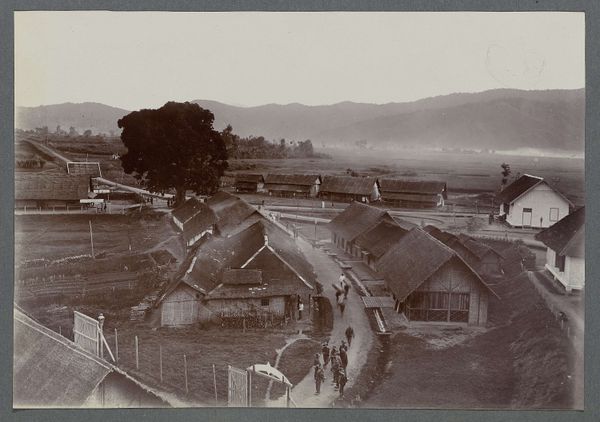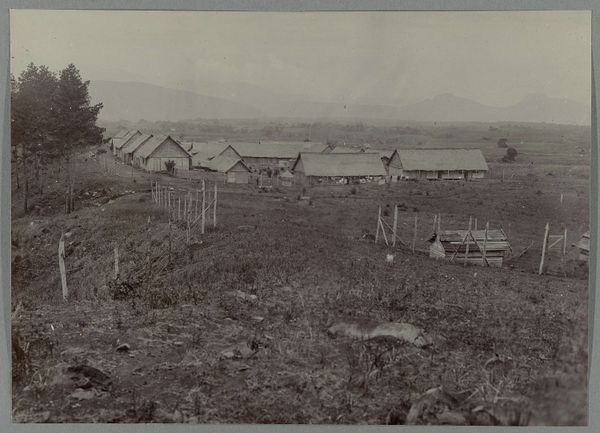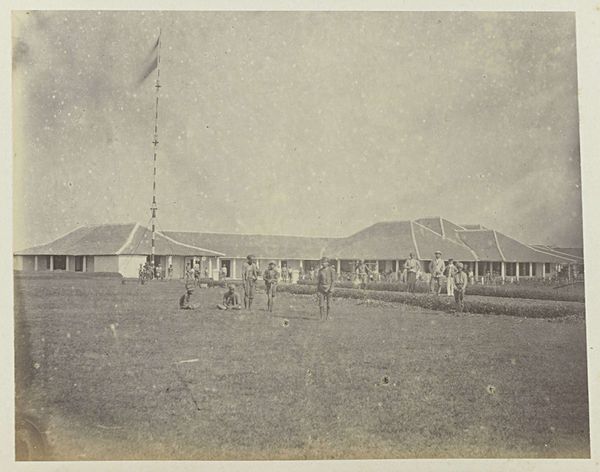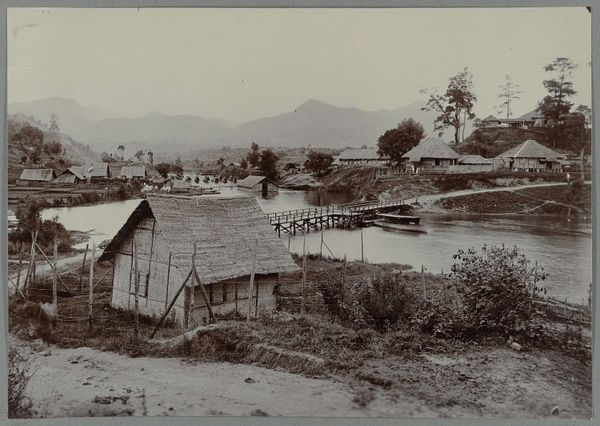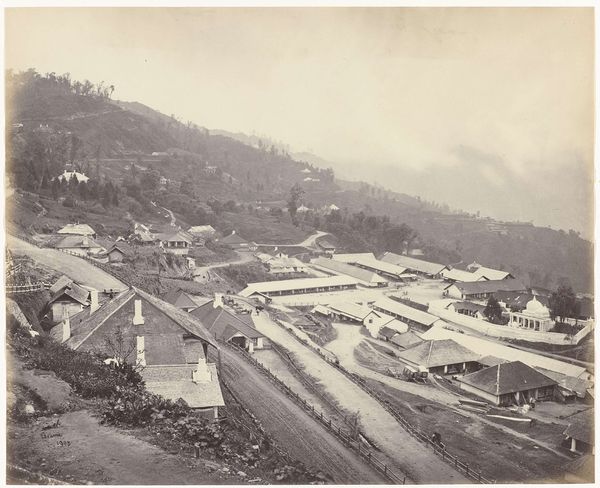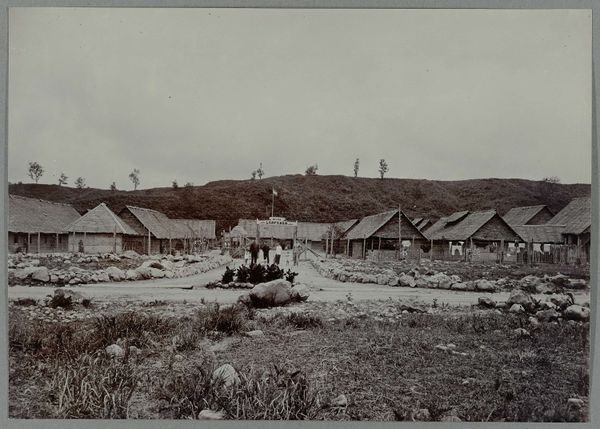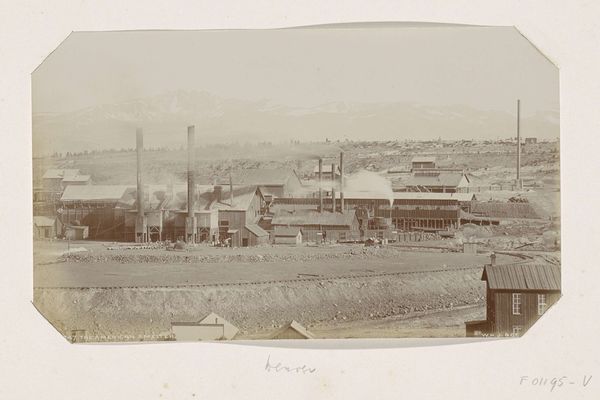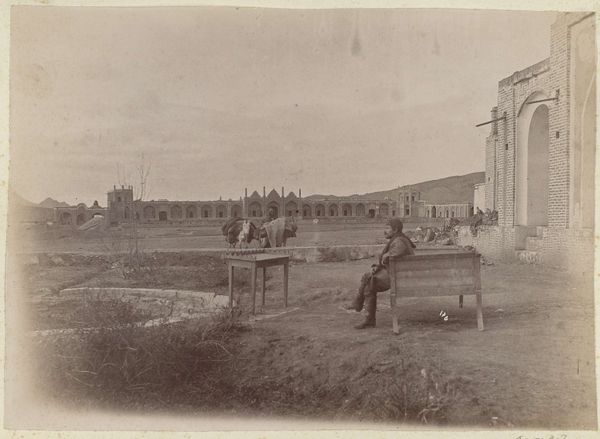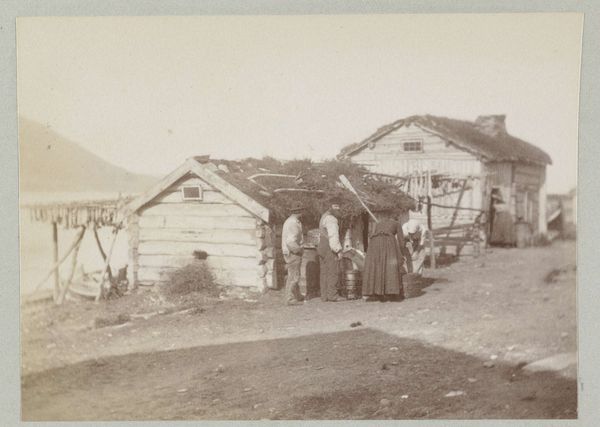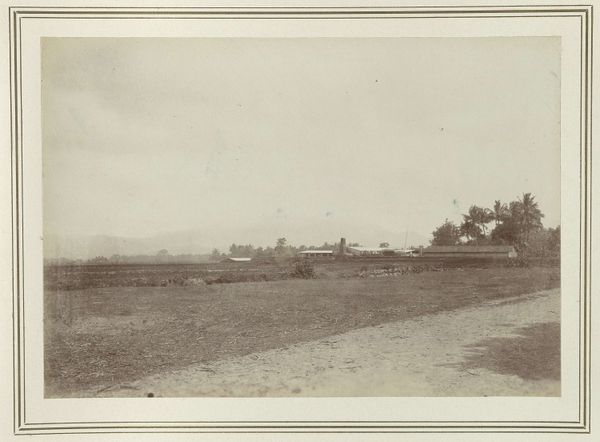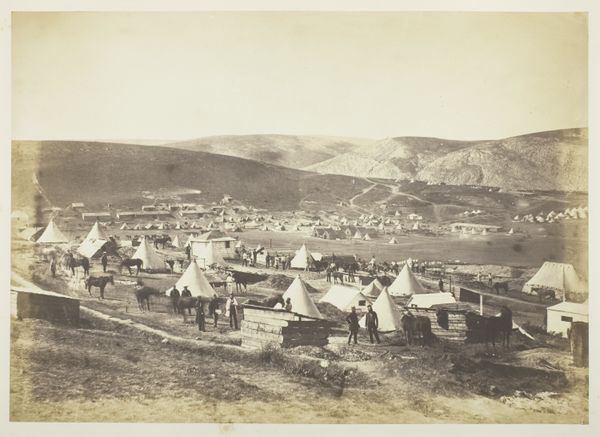
photography, gelatin-silver-print
#
landscape
#
photography
#
gelatin-silver-print
#
realism
Dimensions: height 138 mm, width 200 mm
Copyright: Rijks Museum: Open Domain
Curator: This compelling photograph, titled "Bivak Blangrakal," was created between 1903 and 1913, using a gelatin-silver print. It offers a seemingly straightforward landscape. Editor: At first glance, I find it unsettlingly sterile, despite the 'landscape' description. There's a flat affect to the light and a rigid organization of space. The row of men feels almost regimented. Curator: I understand that initial reaction. The symmetry is indeed striking and perhaps that's precisely what the photographer intended. Notice how the gate with the 'Blangrakal' sign acts almost as a portal—it suggests something deeper. Bivouacs, temporary military encampments, can be sites where identities are constructed. The sign in this picture might thus invite reflection about the idea of colonialism in Dutch East Indies. Editor: Absolutely. What is fascinating is the juxtaposition between that implied "order" with what the image obscures. Who built these barracks and why are the indigenous inhabitants missing? The photograph seems preoccupied with projecting this vision of colonial rule. Curator: That absence is certainly thought-provoking, echoing the larger history of documentation during the colonial era. In that context, landscape photography becomes less about scenic appreciation and more about power and control, about possessing the space symbolically through its image. Editor: And it is important that we recognize how such a photographic technique contributes to a collective memory – for instance, imprinting this 'organized landscape' in the cultural consciousness, to indirectly affirm the ideology of that ruling class, of European occupation. Curator: Precisely. These realistic scenes solidify specific ideologies over time by controlling the narratives associated with that geographical place. A seemingly simple image becomes a powerful statement when contextualized properly. Editor: This photograph underscores that point poignantly. We can learn a great deal about representation and historical narratives simply through this landscape and how people inhabit this space in particular ways, by looking critically at the landscape, the sign and those colonial subjects occupying its foreground. Curator: Agreed. It certainly is food for thought.
Comments
No comments
Be the first to comment and join the conversation on the ultimate creative platform.
